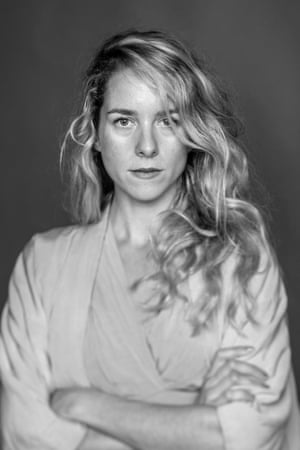I shot this image of Deke, one of the smaller islands of the Pingelap atoll, in the Federated States of Micronesia, in 2015. I had travelled to the atoll to research achromatopsia, a rare genetic condition that causes complete colour blindness and hypersensitivity to light. In severe cases, all you can see is shades of grey. Worldwide, only one in every 30,000 people have achromatopsia. But on Pingelap, one in 10 do. It’s the most colour-blind place on Earth.
The prevalence of achromatopsia on the island can be traced back to the 18th century when it was engulfed by a typhoon, leaving around 20 survivors. The ruler carried the recessive gene that causes the condition. After a few generations, more or less everyone on the island was related to him.
Getting to the islands was arduous, involving three flights to get from Amsterdam, to Pohnpei, then another on a four-seater plane over to Pingelap. As soon as I arrived I was welcomed. A member of the family I was to stay with met me at the landing strip with a marmar, a floral wreath to wear in my hair.
On one of my final nights on the island, one of my host family’s relatives came over from Pohnpei. They prepared a ceremony for me and killed a pig – something usually reserved for weddings and funerals – and announced that I was “one of the family, once and for all.”.
Trying to understand the place of achromatopsia in Pingelapese culture wasn’t easy. When you can’t see colour, the concept doesn’t really mean anything. In a bid to understand what the world looked like for the islanders, I prepared workshops where they would draw and paint over my images. Most people discover they are colour blind when they come to paint or draw. It can be a moment of shame, or loss. Instead, I wanted to celebrate their unique way of seeing the world.
I took this photo after the first workshop, as the boat was returning to the mainland. It was a special day, and I wanted to mark the occasion. I shot it with a Nikon fitted with an infrared lens and a colour filter. I had no idea the shot would look like this until I got home, and I didn’t retouch the colour balance at all – this is how it came out. It was the perfect way of capturing a project that was all about seeing the world differently.
Looking at it now, I can’t help but compare the scene to images of refugee boats that have filled television screens over the last few years. That might be reality for the Pingelapese in a few decades’ time. The Marshall Islands and Micronesia are likely to be some of the first places to disappear if sea levels continue to rise. They live in tiny, harmless economies, but it’s they who will pay the price for the way the west lives.
Sanne de Wilde’s CV

Born: Antwerp, Belgium, 1987.
Studied: Painting at Sint Lucas in Antwerp and photography at the Royal Academy of Fine Art in Ghent.
Influences: “My dad, who was a photographer, and Michael Jackson.”
High point: “I just gave a talk about the Island of the Colourblind in Norway, and a guy came up to me at the end and told me how much he loved my work. Hearing someone express such genuine emotion at something I’d created felt amazing.”
Low point: “When I went back to Micronesia two weeks ago, I wanted to put my camera away and relax for at least one day, but I ended up spending the whole evening replying to emails. It’s just so hard to find time for myself at the moment.”
Top tip: “Don’t burn out! Believe in what you’re doing and throw yourself into it, but make sure you leave time to rest and recharge.”